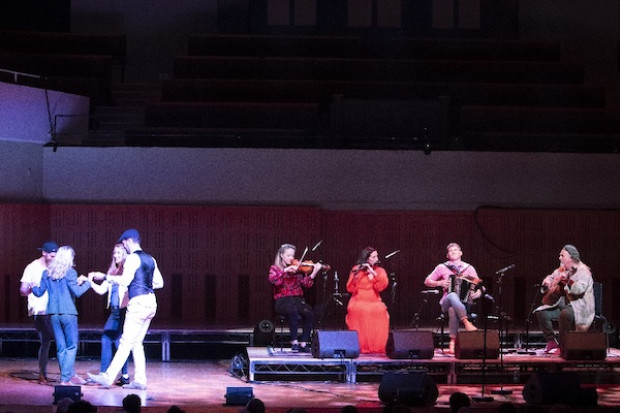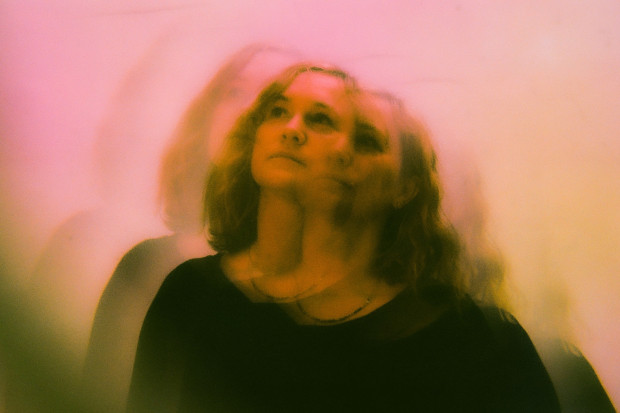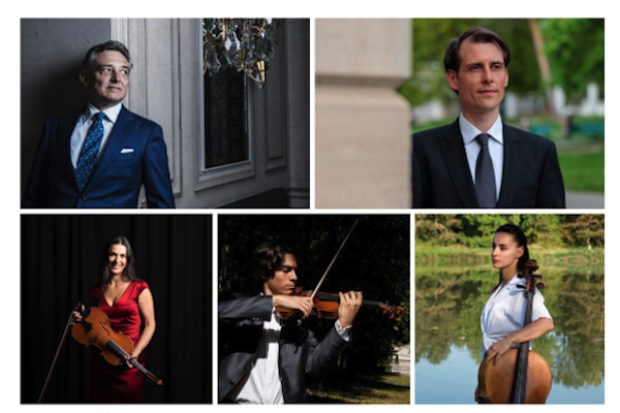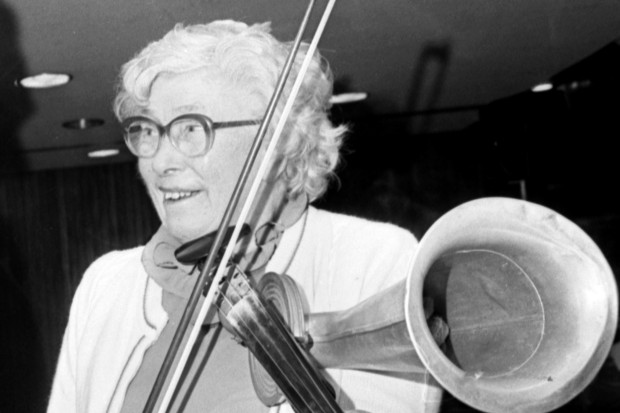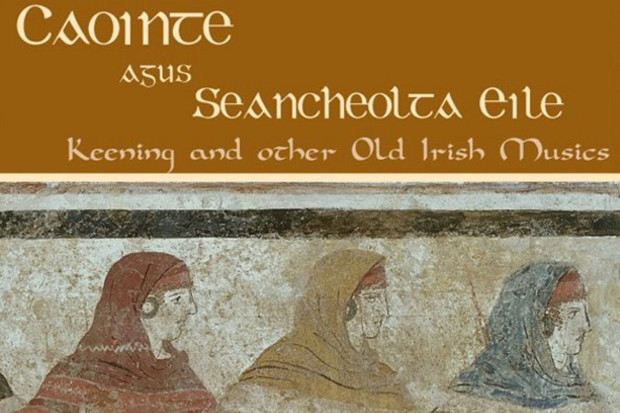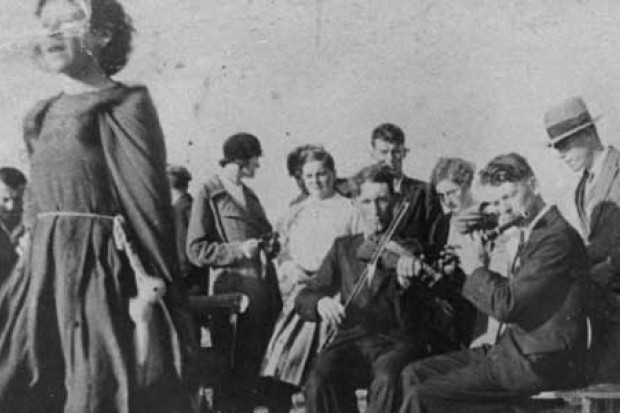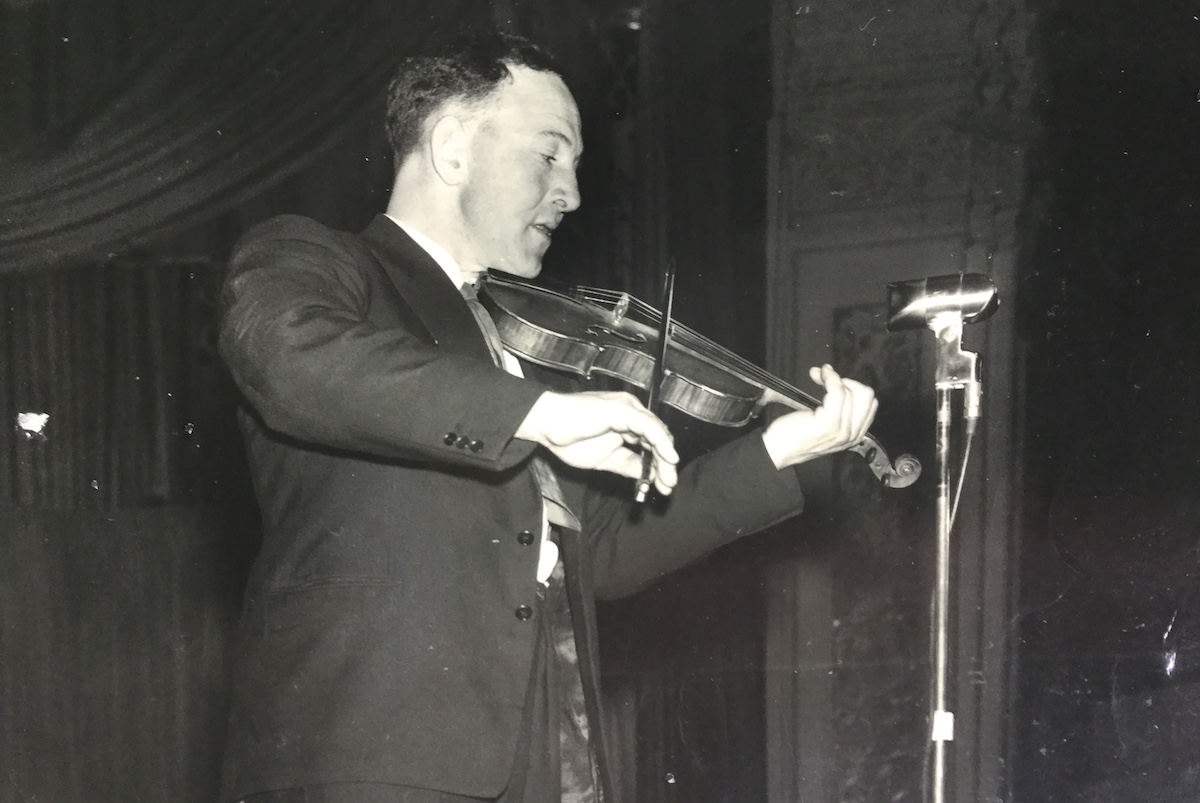
Paddy Canny playing in Carnegie Hall, New York, in 1956. (Photographer unknown. Image courtesy of the Tamiment Library, New York University.)
A Traditional Fiddler in the Modern World: Exploring the Music of Paddy Canny
This is a book about Paddy Canny (1919-2008), a farmer from near Feakle in east County Clare who is today regarded as one of the finest stylists in the Irish traditional fiddling tradition. The author Helen O’Shea previously published The Making of Irish Traditional Music (Cork University Press, 2008) and is also a fiddle player and, according to the book’s cover, a writer of ‘creative non-fiction.’ Her first book addressed Irish traditional music in contexts stretching from nineteenth-century cultural nationalism to twentieth-century modernisation, including controversial discussions of (in)authenticity and the gender and ethno-national boundaries musicians and listeners erect around musical activity in the traditional music scene in County Clare. This was an ambitious, dense and aggressively academic work (40 of its 200 pages were given to over 700 footnotes with an ostentatious range of sources from Kant to Adorno, Bakhtin to Said, and of course all the heavy hitters of ethnomusicology). Her new book returns to some of the same locations and musicians in east Clare, but it is a radical departure in style and presentation. This is signalled by the format of the book: A4 in size, with wide margins, a well-curated selection of photographic images, divided into nearly 60 ‘chapters’ of no more than a few pages each, punctuated by transcriptions of over 20 tunes with sidebar discussions – but not a single footnote.
The work is introduced with the following words (with my emphasis):
No Better Boy tells stories based on the life of the renowned Irish fiddle player Paddy Canny, who lived in north-east County Clare, Ireland between 1919 and 2008… Paddy remained a farmer throughout a long life that saw major political, economic and social changes as well as transformations in the settings in which he played music and the meanings that music had for listeners… With very few written records of Paddy Canny’s life, the stories told here are distilled from other stories, stories told by his family and friends, stories from folklore, and stories told by historians.
This is an intriguing, if slightly worrying, opening statement about the creative non-fiction that is about to unfold. Academic historians have generally accepted, seeing no alternative, that they are storytellers like the rest of us, and that their stories do not have an exclusive grasp of historical truth or meaningfulness. Yet there is a crucial difference between an historian’s story and a story told by, say, Canny’s neighbour, or a creative writer: the historian’s story is a product of social science. As such, it is part of a collective, intergenerational effort. Rules must be followed: methodologies need to be clarified, the evidence for factual claims must be clearly provided for others to verify, and truth claims must be based on these factual claims and exposed to debate. All this requires footnotes, and lots of them.
Canny’s life covers decades that are deeply significant for the historical understanding of contemporary traditional Irish music. Many have touched on the various factors bearing on the alleged decline of traditional music in the depressed and war-torn 1930s and 1940s, and the role of clerical repression in this decline, but this complicated passage in the history of Irish traditional music needs further and deeper research and reflection. This is a huge task, requiring coordinated research into British, American and Irish sources. Both of O’Shea’s books contribute to this work, but a piece of evidence used in the two books demonstrates the complexity of the challenge. In her first book, The Making of Irish Traditional Music, in a discussion of the increasing powers of surveillance of social dancing by the Catholic Church from the 1930s, O’Shea quotes Canny’s brother Jack discussing a house dance. The quote contains ellipses indicating some material has been elided, and so at the end there is a footnote containing the source. In No Better Boy, O’Shea reprints the same quote, this time including previously elided material on Jack’s impressive career as a competitive cyclist. But there is no footnote, and yet the source is included in a highly selective bibliography in the back pages. Is this significant? Quite possibly. A future researcher might wish to validate and scrutinise testimony like this. No Better Boy is rich in similar anecdotal information, drawn from trustworthy historical narratives, extensive fieldwork and musical sources. Those familiar with the sources will recognise that her portrait of the 1920s draws on David Fitzpatrick’s definitive account of the civil war in Clare, and that the context for Canny’s visits to New York is derived from Susan Gedutis’ excellent research on the mid-century Boston Irish ballroom scene. But No Better Boy is not social science; it is something else. The author has apparently, for this book anyway, decided that telling stories about stories is a better path to the truth.
Artfully rendered
So we have, instead of a social history or narrative biography, a beautifully structured ensemble of short passages about Canny and the people and places around him, from his childhood in the 1920s to his final years in the first decade of the twenty-first century. Each artfully rendered passage takes the reader about as long to read as it takes to play through a tune a few times, or so it feels. The author paints a variety of pictures, some with broad brush strokes, others precisely etched, each imaginatively launched from a farming task, an encounter between musical neighbours, a road trip, a renowned musical event, or a tune. Though the passages progress in a vaguely forward-moving chronology, with very occasional signposts to what year it might be, they hold the reader in a kind of suspended and eternal present of the mid-twentieth century – again the way one feels while playing an old tune around a few times. The reader turns over a page, a new topic is introduced, and who knows where the author will take it?
One passage begins with Canny ‘freewheeling into Feakle on a Sunday evening…’ and we end up miles away digging spuds for an old neighbour, then sharing tunes with the fiddler Martin Rochford, whose character and musicality are contrasted with Canny’s. Another begins ‘Are you anything to Pat Canny?’ The question from an old man sweeping the floor of a Tipperary dance hall provokes a poignant contrast between the impoverished rural world of Canny’s father and the glaring new lights of the parish hall where the sharply dressed members of the Tulla Céilí Band are gathered, skilfully steered to artistic and commercial success by musicians Seán Reid and P. Joe Hayes.

Paddy Canny in Ennistymon in 1997 (Photo: Peter Laban)
As the reader’s time slips away, we move silently forward through Canny’s life, he already looking back on his own life, missing his former bandmate Joe Cooley now gone to America along with thousands of others. The effect of an eternal present is supported by the use of the present tense. Many historians have adopted this annoying novelistic habit to enliven their narratives. It is annoying because it cannot apparently be consistently applied, the writer necessarily lapsing into the past tense, exposing the tactic as a clumsy artifice. The artificiality is further exposed by O’Shea’s use of the present tense to describe not only what Canny might have done (‘Paddy is always watching them’, ‘Paddy plays with his new friends’, ‘Paddy pulls in his horns’…), but also what he was thinking and feeling (‘Paddy soon understands that’, ‘and yet he knows’, ‘Paddy hears new pathways through the melody’…). To enliven her stories, the author asserts her sovereignty over the psyche of her subject and lets the world know what he was thinking and feeling, over half a century ago. This, for better and worse, is how creative non-fiction operates.
However readers may respond to the aesthetics, there is no denying that O’Shea takes them on a richly enlightening journey through the life and times of one of Ireland’s most important fiddle players. The author occasionally lets down her guard, and a few questionable turns of phrase slip that would have never survived the acid bath of criticism employed in her previous book. For example, ‘Music articulates the musician’s inner experience where words fail to do so’; Canny’s playing contains ‘melodic and rhythmic undercurrents beneath the surface’; of fiddler Bobby Casey, ‘West Clare is in his music and will never leave it.’ Concepts like inner experience, surface/depth, and locality as determinant of authentic style, are all open for the type of interrogation, theorising and deconstruction that readers of O’Shea’s first book might expect here. However, the present work is in many ways stronger and more perceptive than the previous one.
Highly developed duet playing
A central episode in Irish traditional music is the making of the historic 1959 commercial recording All Ireland Champions – Violin, which featured Canny’s highly developed duet playing with P. Joe Hayes, along with Peadar O’Loughlin on flute and Bridie Lafferty on piano. Whereas, in The Making of Irish Traditional Music this album functioned as a foil for a highfalutin’ riff on the conceptual couplet gift/commodity, here we get a much more down-to-earth and multifaceted mosaic on how the album was made, where the musicians were coming from, what it sounds like, how it was received in the 1960s, and its long history of influence on later generations.

Paddy Canny (left) and Peadar O’Loughlin play a tune outside the Community Hall, Miltown Malbay, Co. Clare, during Scoil Samhraidh Willie Clancy 1997. (Photo: Tony Kearns. Image courtesy of the Irish Traditional Music Archive.)
Time appears to have deepened O’Shea’s understandings of east Clare, its musicians, dancers, and listeners. She is a master of vocabularies of both farming life and musical technique. She handles with a deft touch the complex intergenerational reception of the new-fangled gramophone, the astounding music recorded on its 78 rpm discs (‘seventy eight revelations per minute’ in one wag’s beautiful malapropism), and how the Tulla Céilí Band became so successful, ‘bringing the sound of progress to small country places and the sound of home to emigrants’. Her narrative also very effectively suggests the powerful agency of women in musical life. Blind Paddy Mac, the legendary teacher of Canny’s father and a whole generation of local musicians, got his fiddling skills ‘from three ladies who were travelling the country together’. A tender passage on his vulnerable and formative years has Paddy, his mother’s youngest and her pet, left behind to help her with the daily house and garden work while father and siblings are out in the world. The influence of his aunt, a concertina player and host of house dances, is noted. Aunts from America send the 78 rpm records home. The house dances die out and are replaced by fox-trotting parish hall céilís for a host of reasons, but one is that young women much prefer the latter. Boys may think that ‘dancing is a way to get the feel of a woman’, but O’Shea explains how it is equally or more so the other way around. The first gig for what becomes the Tulla Céilí Band is organised by women. Canny’s mother, networking with local kin and her sisters in America, secures him a farm and saves him from emigration. A big night in the Hayes farmhouse, when Ciarán Mac Mathúna and his crew of engineers turn up to record the band members, is narrated from the perspective of Peggy, Martin Hayes’ mother, who readies the house and feeds everyone.
With great subtlety, O’Shea shows how the man’s world of cattle rearing, dairying and public music making stands on a foundation of maternal and sisterly labour, skill, networking, organising, planning and scheming. Women bring the men together into musical alliances, but they can also break them apart. On occasion, O’Shea crosses a line, exposing to the reader intimate details of familial and neighbourly relationships and opinion in this musical community that may be deeply affective to the generation now living their musical lives, but who are otherwise excluded from her collection of stories.
Most significantly, for this reviewer, this book is by a fiddle player, about a hugely important fiddle player, for fiddle players. The subtitle is ‘Listening to Paddy Canny’ and in this aspect the work is an unqualified success. The most significant passages in the book are those that take as their starting point the contents of some rare field recordings O’Shea has hunted down in the Irish Traditional Music Archive and the John Burns Library at Boston College. Here O’Shea’s narrative style powerfully breathes life into the occasion of the recordings, while she lays out in sidebars in words and notation how Canny made the sounds he made. O’Shea shows how he grappled with the material on 78 rpm recordings of the great virtuoso Michael Coleman and made them his own. The reels ‘Ballinasloe Fair’ and ‘Trim the Velvet’, and the challenging hornpipe ‘Murray’s Fancy’ (renamed ‘The Cuckoo’ by Canny), are all transcribed and discussed in detail. Other transcriptions show how his approach differed from his musical companions Martin Rochford and P. Joe Hayes. O’Shea cleverly overlays transcriptions of Canny’s performance of tunes with those of Coleman and others, clarifying his melodic choices and habits. Through her ‘forensic listening’ and careful exposition, we can appreciate Canny’s deft ying-yang technique of punctuating long-bowed passages of legato playing with spikey staccato articulations, his sudden halts with a double stop bounce of the bow, his evocative habit of rising in volume as a phrase of a tune ascends to a long note on the E string, falling back into quietude with the descent that follows. This is brought out clearly in the inevitable comparison with Coleman, contrasting the older master’s ‘restlessness’ and ‘bouncy ebullience’ with the slower, ‘more nuanced’ and ‘emotional journey’ Canny takes his listeners on.
A note somewhere in between
Unavoidably, O’Shea grapples with the so-called ‘Lonesome Touch’ of east Clare fiddling, entering metaphorical and musical territory fraught with dangers, where so many have fallen into a thicket of purple prose and over-expressive, sickly-sweet fiddling. O’Shea handles this with skill. ‘The baby’s first cry for breath after losing its sustenance in the womb is lonesome’, she writes. The east Clare fiddlers ‘squeeze a note to make it cry’. She proceeds then to show and discuss how this is done on the third and seventh notes of the scale. Playing in the key of D, ‘where a classically trained violinist would know two distinct positions (F and F#, C and C#)’ the older players around Feakle had just the one note, somewhere in between.
While writing this review I have been listening to a field recording of Canny, of uncertain provenance, possibly from the 1950s, which includes stunning renditions of the reels ‘The Galtee’ and ‘Johnny’s Wedding’, and dozens of others. Canny, a traditional fiddler in the modern world, had the skill to nail the F# to precisely match the accordion or piano. He was, after all, a musical partner to two of the twentieth century’s most renowned accordion players. But he was also a master of a vast sonic palette ranging from somewhere above E to somewhere just underneath G. The playing on the recording I am hearing is nearly as ebullient and restless as Coleman’s, but Canny could squeeze a note to make it cry at nearly the same speed, with an exquisitely tasteful glissando, and he let the subtlest decrescendo fall with a nearly imperceptible slackening of the pace to end a phrase.
O’Shea has said just about all that can be said about these matters, and said it well. It’s up to fiddlers to work it out. No Better Boy won’t provide them with any shortcuts or secret sauce, but with this book to hand, the musical journey is deeply enriched.
No Better Boy: Listening to Paddy Canny by Helen O’Shea is published by the Lilliput Press and is available to purchase here. The book will be launched at the Irish Traditional Music Archive on Monday 15 May. For further details, see here.
Published on 11 May 2023
Martin Dowling is a fiddle player and author of 'Traditional Music and Irish Society: Historical Perspectives' (Ashgate, 2014). He lives in Belfast.













